Something to write home about.
Folks, I don’t know if this constitutes a ‘Sleeper Hit’ or if I’m just woefully uninformed, but the Opus 88 Halo is one of my favorite pickups of the past year. Given that they have been making fine writing instruments for more than 45 years I’m inclined to believe the latter, but I have wasted enough time. Let’s talk about pens.
The Pen
The Opus 88 Halo is a full-sized acrylic pen with a transparent body, translucent grip, and a number five JOWO nib unit. The pen uses an eye-dropper fill system with a retractable plug acting as a seal between the ink reservoir and the nib unit. The clear, slightly frosted twist-off cap holds a metal clip and is adorned with simple branding and logos lightly etched into the surface. The metal clip is firm, but just flexible enough to get in and out of sleeves or pockets easily.
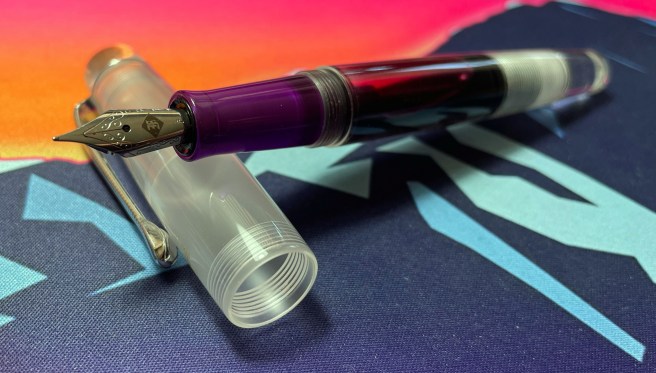
One fun feature that I don’t believe was at all intentional is a result of the simple acrylic components that make up the pen. This pen, my pen, has a removable threaded cap finial that allows me to convert the Halo into a clipless pen. A closer inspection reveals that this is likely a result of the glue not bonding completely, but where some may see a production errors, I see a bonus feature. As good as this pen looks, removing the clip gives it an even cleaner minimalist look.



One minor issue I do keep running into is the grip unscrewing ever so slightly during the first fraction of a turn when unscrewing the cap. I can’t tell if the tolerances are too tight on the inside, like maybe the grip section is slightly too wide at the base and is catching the cap as it turns. Either way, it only turns the grip a enough for met to notice and re-tighten it. Not enough to cause any leaks or other malfunctions. Not yet, anyways
The Filling Mechanism
Unlike western eyedroppers like the Kaweco Sport or various Franklin-Christoph pens, this ‘Japanese-style’ mechanism keeps a finite volume of ink in the feed, ready to write, while the main ink capacity is safely sealed in the body. The mechanism is visually similar to vac-filler pens like the Pilot 823 or the TWSBI Vac/Vac Mini, but does not create any sort of vacuum pressure. It’s just a plug on a stick.

To fill the pen, you simply unscrew the grip unit, partially unscrew the plug (via the clear knob on the end of the barrel), and use the included glass eyedropper to fill as much as 2ml of your favorite ink. The threaded section of the grip comes equipped with a thick rubber O-ring installed, so no additional silicone grease is needed to keep the ink in place. Easy-peasy, bulb go squeezy.
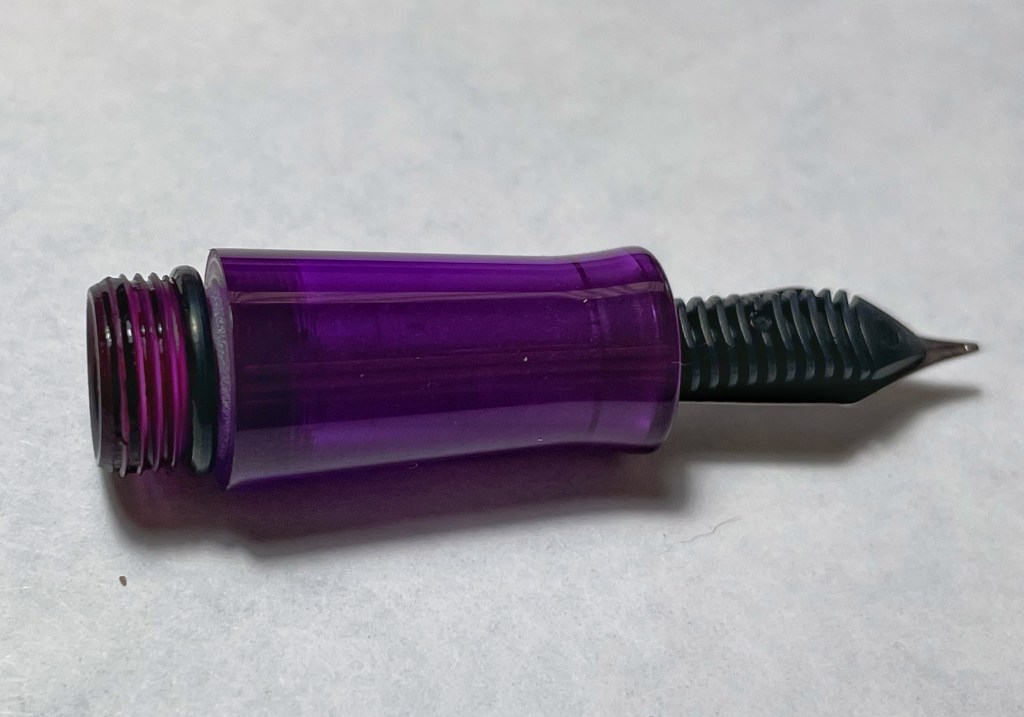

In addition to the cool factor of having a big clear pen full of colorful ink, this style of eyedropper pen has a few other material benefits. As mentioned above, the mechanical stopper and physical gaskets in place mean that this pen holds ink perfectly well on its own. Western eyedroppers like the Kaweco Sport generally require a bit of silicone on the threads to create an air/ink-tight seal on the ink compartment before filling the pen with a syringe or pipet. Filling a pen this way is a pretty simple procedure, though I tend to end up with inky fingers regardless because of who I am as a person.
The other benefit of this fill mechanism is the seal created by the stopper. With cartridge/converter pens that have been adapted to fill with loose ink, there is nothing separating the feed from the ink reservoir. This can lead to ink ‘burping’ or dribbling up through the nib when writing. And, if you live in a warmer climate, subtle temperature changes can even cause pressure shifts in the ink leading to spillage even while the pen is idle. With Opus 88’s fill mechanism, the ink is sealed securely away from the feed so you never have to worry about oversaturation or a dribbling nib. The feed section holds enough ink for a pretty decent writing session, maybe by the time this post is ready I will have sat down to write it dry and give you an approximate letter count on one feed’s worth of ink. But once it writes dry, or if you’re sitting down for a long stretch of writing, all you need to do is back out that plug a few turns and the flood gates are open. The pen keeps up perfectly to linger-form writing, giving a consistent ink flow going as long as you need it. And, for those who are so inclined, the cap does post. Even with that plug in the open position.

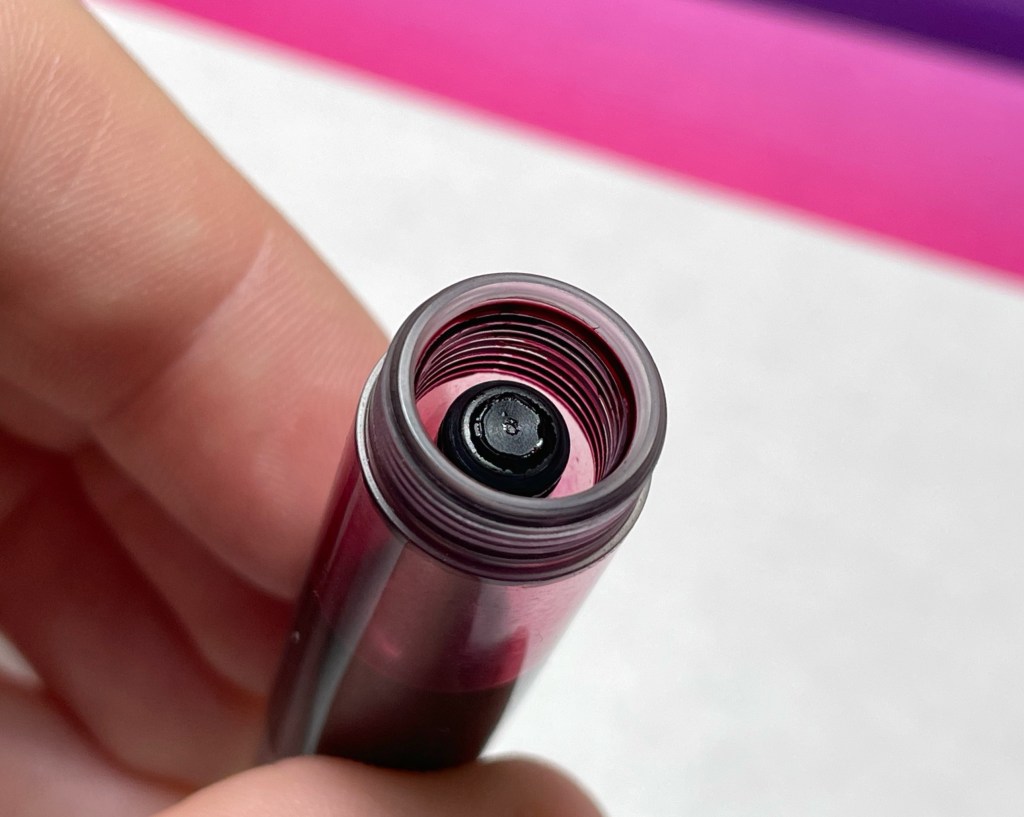
The Nib
There isn’t a whole lot that is particularly unique or ground-breaking with the nib. The Halo uses a number 5 JOWO unit that is available with Opus 88 branding in sizes Extra-Fine through 1.4mm Stub. I originally picked mine up with the 1.4mm stub because it was something I didn’t already have, but ultimately the stub just doesn’t go well with my writing style. The stub nib writes smooth out of the box, no tuning or tweaking required. In my regular use of the pen, I tend to go between Fine or Extra-Fine nibs that I happen to have because of, again, who I am as a person. The JOWO nib units are threaded and easy to swap out. Currently I’m writing with an un-modified Franklin-Christoph fine number five nib. The grip is comfortable, the nib is smooth, the flow is steady, and I’m a happy penman.
Conclusion
I could keep going about how comfortable this pen writes, or how much I appreciate the large ink capacity, or how cool it looks when it’s about half-full and the ink is sloshing around in the barrel. I could tell you that this pen is a heck of a deal at $93 (or less if you find the right specials). But the strongest endorsement this pen can receive comes from friend of the blog and all-around clever fella Mr. Brad Dowdy. The Pen Addict recently collaborated on, and quickly sold out of, an orange limited edition Pen Addict x Opus 88 Halo fountain pen. As far as recommending a product goes, that’s about as good as it gets.
I picked up my Halo from EndlessPens, who did not sponsor this post, but they do have a pretty good selection. The Halo is also available at JetPens, Yoseka Stationery, or Cult Pens for regional preference. Definitely check this one out, I think I see a few more Opus 88 pieces in my future.
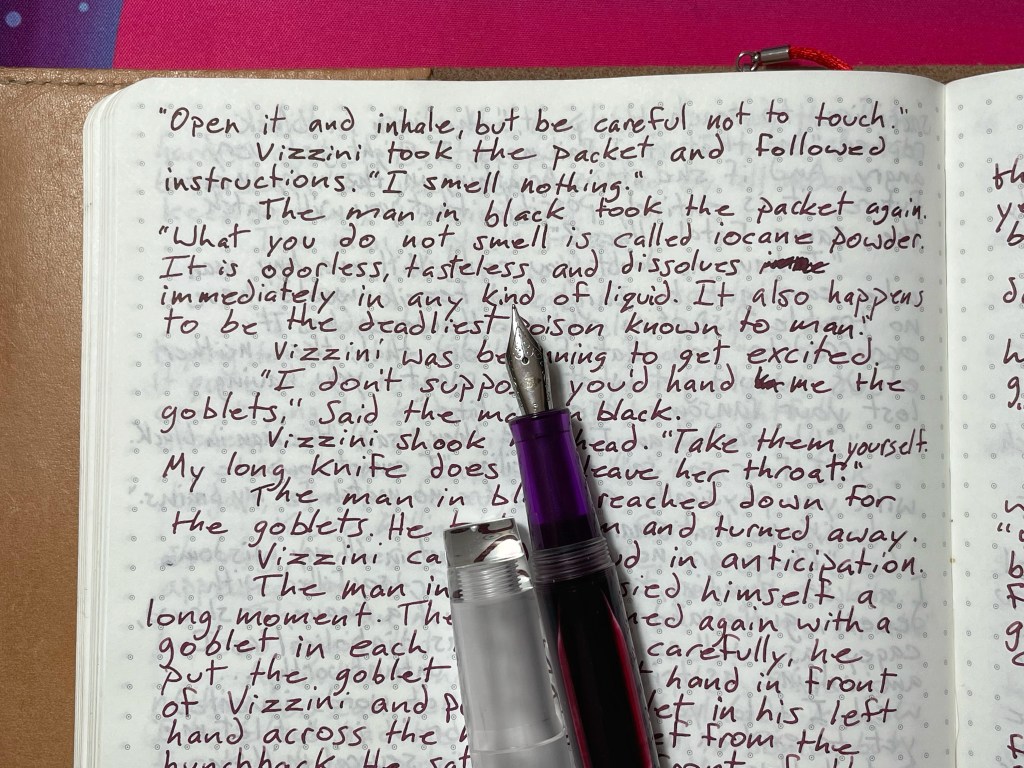
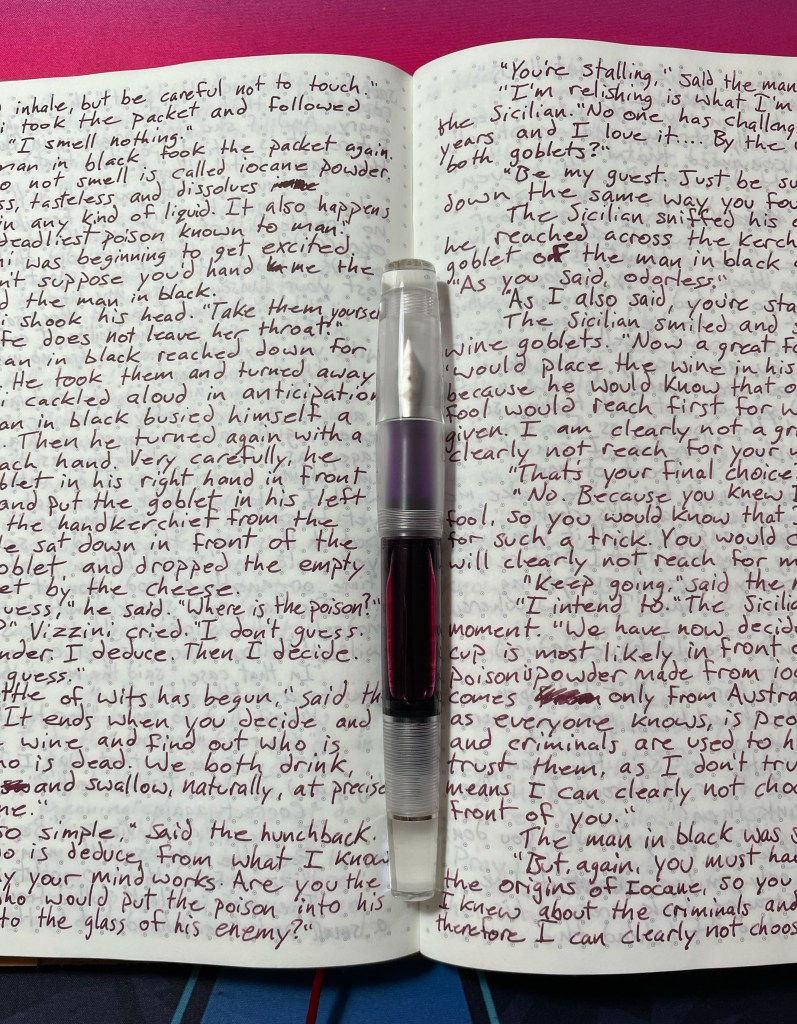


Disclaimer: The products mentioned in this blog were purchased and paid for by The Poor Penman. All opinions stated are my own.
If you liked this post, and would like to help support my pen habit, please consider the Tip Jar.

Do you know if this pen can last long without drying out? I realize the shut-off valve would stop the main reservoir of ink from drying out, but there’s still ink in the feed and nib. Does this does out over time? I’m trying to compare this in reliability to the platinum with the slip & seal mechanism. I really love the idea of this pen, but I also want a pen that will strongly resist drying out.
LikeLike
In my experience the Halo is pretty shelf-stable when it comes to flow, but Platinum’s mechanism is on another level. Since the Halo’s threads are the only think trapping moisture in the cap, it’ll never be as perfect of a seal as a spring-assisted covering.
That being said, it can also have a lot to do with the inks your using. Some inks just dry out in the nib a little faster than others.
In any case, I find storing my currently inked pens horizontally is a good way to keep the feed filled and ready to go.
LikeLike
I saw a link to your review on the Well-Appointed-Desk and, I’d just bought this same pen (But in a broad, because like you I didn’t have one!). I wish like yours my clip could be removed, but I’m glad to see the nibs can easily be swapped because I’m finding I really am a Fine/Medium person.
I’ll definitely look into swapping that out so thanks for mentioning that in your review!
LikeLike